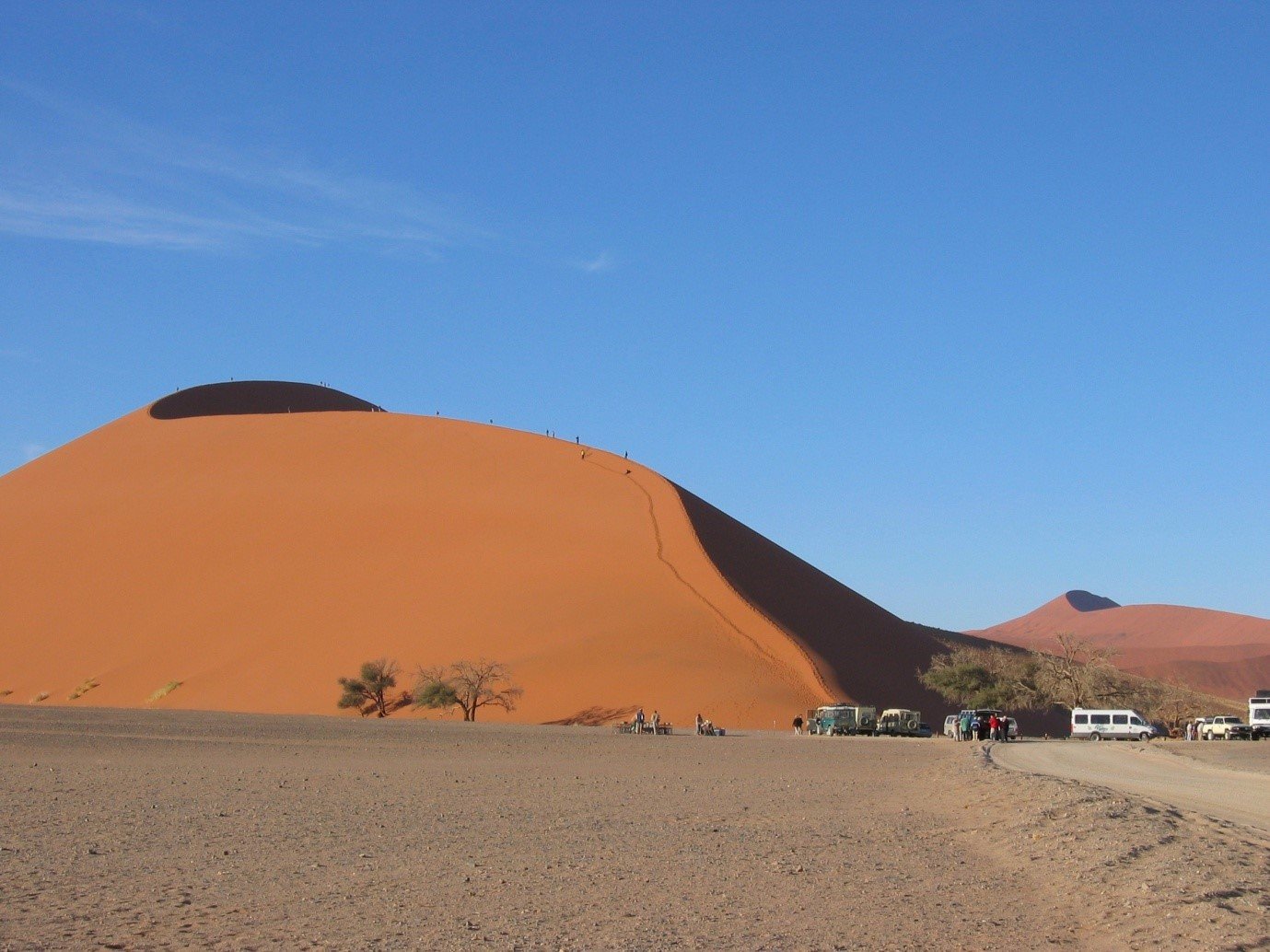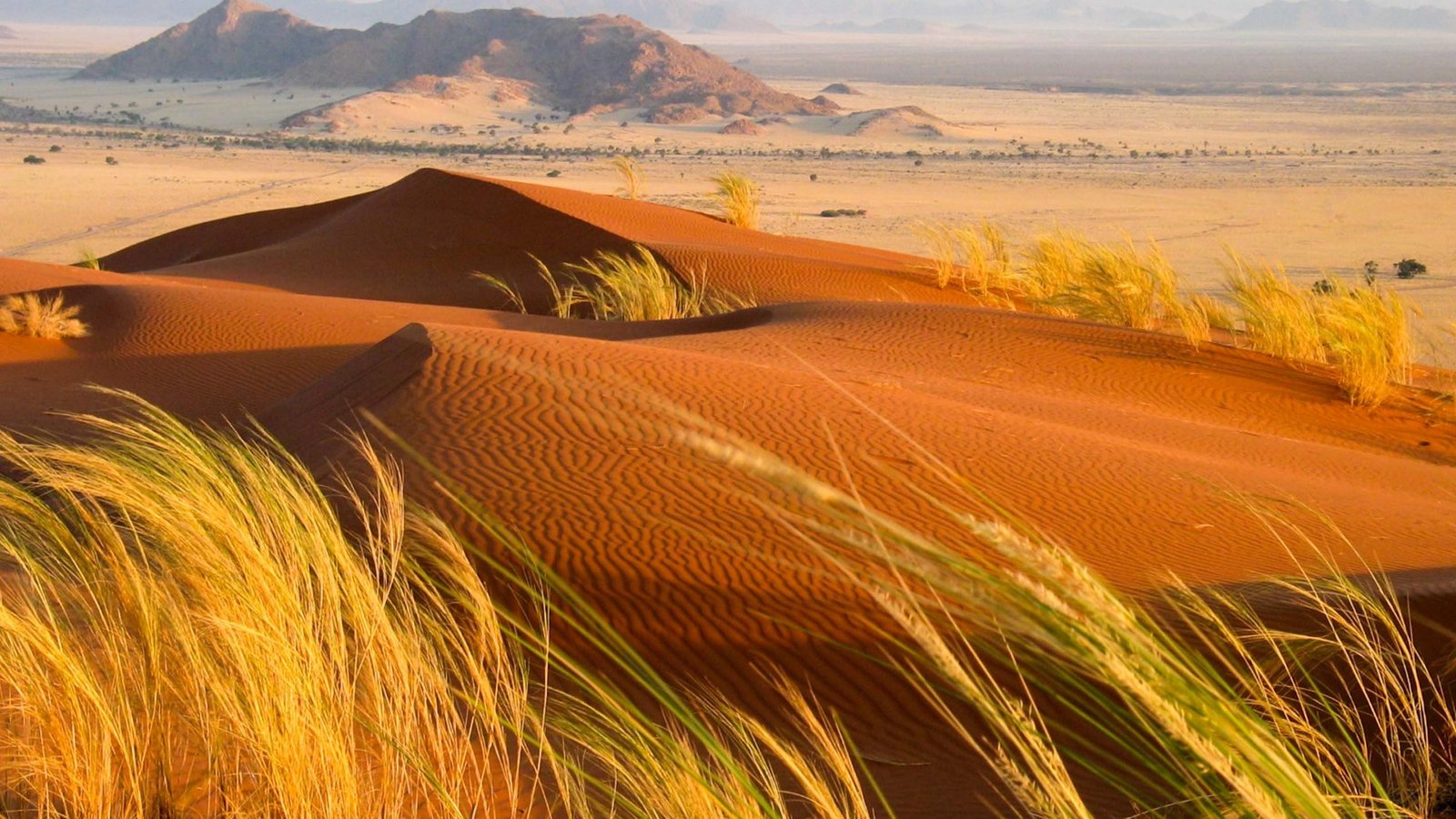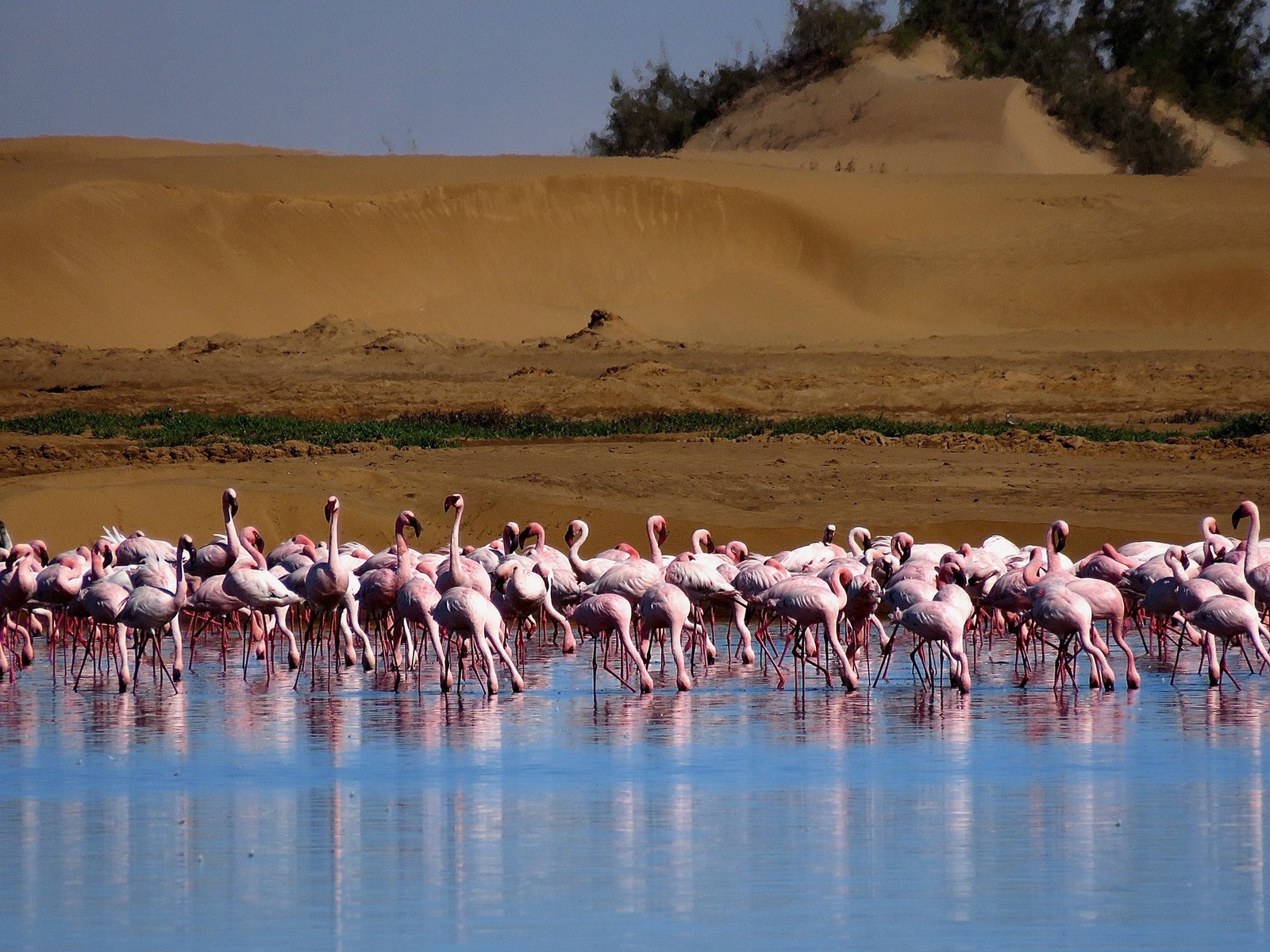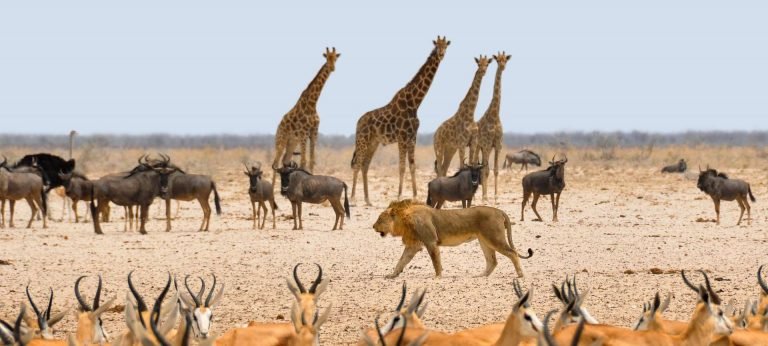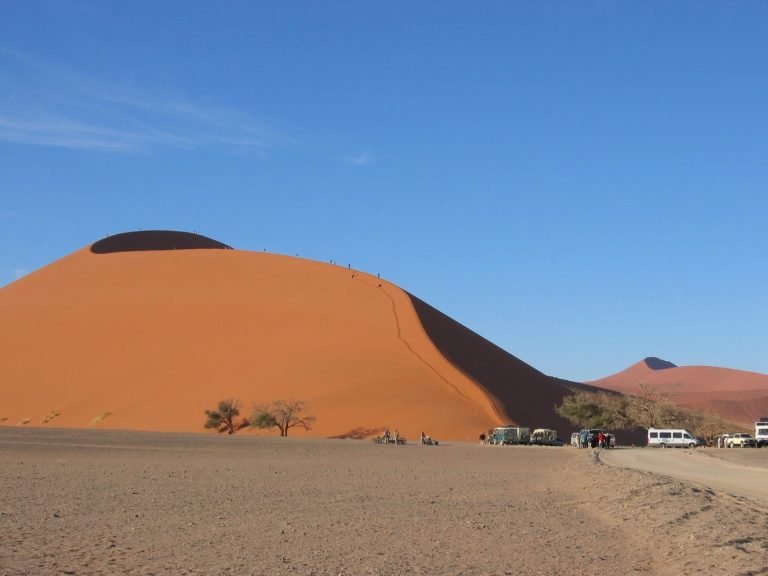Namibia
About Namibia
A travel in Namibia! The vast desert sceneries. Namibia is one of the most diverse and surprising countries Africa has to offer! While on travel in Namibia you will find expansive ancient deserts, safaris, huge sand dunes off the Atlantic coast, ancient cultures, desert scenery and a variety of animals that will make you wonder – how have I not been there until now?
In Etosha National Park it has one of the most storied wildlife reserves on the continent, but there’s so much more to experience here. While on travel in Namibia you will visit several national parks and few little known like the Caprivi Strip which are only now getting the attention they deserve, while the dune-scapes of the Skeleton Coast and its hinterland are simply extraordinary. And these are just starting points for exploring a country rich in experiences and safari possibilities.
Where is Namibia?
Namibia is located in South West Africa and borders Angola, Zambia, Botswana, South Africa and the Atlantic Ocean. Its vast area spans more than 824,000 square kilometers and has only about 2.5 million inhabitants. Of cold ocean currents coming from Antarctica, large river-ways and desert weather in most parts of Namibia.
When to travel in Namibia?
We’re often asked ‘when is the best time to go to Namibia?’, and the answer is usually complex. It will depend on many things including your interests, where you want to visit and why you’re travelling. One person’s best time is not another’s! However, often a concern about the weather underlies the question of ‘the best time to go’. So here we’ve put together a very rough guide to the climate in Namibia. Remember that this comes from records and our experience, not from a crystal ball, and that Africa’s weather patterns are becoming increasingly unpredictable – probably due to global warming.
Namibia offers exceptional wildlife and scenery all year round.Partially covered by the Namib Desert, one of the world’s driest deserts, Namibia’s climate is generally very dry and pleasant – it’s fine to visit all year round. Namibia only receives a fraction of the rain experienced by countries further east. Between about December to March some days will be humid and rain may follow, often in localized; afternoon thunderstorms. These are more common in the centre and east of the country, and more unusual in the desert.
April and especially May are often lovely months in Namibia. Increasingly dry, with a real freshness in the air, and much greenery in the landscape; at this time the air is clear and largely free from dust.
From June to August Namibia cools down and dries out more; nights can become cold, dropping below freezing in some desert areas. As the landscape dries so the game in the north of the country gravitates more to waterholes, and is more easily seen by visitors. By September and October it warms up again; game-viewing in most areas is at its best, although there’s often a lot of dust around and the vegetation has lost its vibrancy.
November is a highly variable month. Sometimes the hot, dry weather will continue, at other times the sky will fill with clouds and threaten to rain – but if you’re lucky enough to witness the first rains of the season, you’ll never forget the drama.
Seasons
Namibia’s high season is from July – October. Due to the low number of rooms in most of the Namibia lodges and camps, availability is at a premium over this time, so it is essential to book well in advance.
Shoulder season is from May – June. This is also a ‘busy time’ in Namibia’s national parks and reserves.
Christmas and New Year as well as April is high season for local holidaymakers.
Things worth knowing
1. The population of Namibia consists of 11 large ethnic groups. The largest of these is the Obambo tribe whose sons make up about half of the country’s population.
2. Although not very famous, the Namibian cuisine is very fine. It includes many fresh ingredients such as mushrooms, oysters, asparagus and other vegetables. The beef offered in fine Namibia is high quality. Enthusiasts can try ostrich meat or even crocodile here.
3. What do you drink in Namibia? Good wines are imported to Namibia from neighboring South Africa. Some breweries contribute good quality products to the local market.
4. Special Experience – Visiting the Dunes: Visiting the reddish dunes of the desert landscape at sunset. When the soft sand gets wonderful colors and the sun is no longer blazing, it is one of the strongest and best experiences you can get in visiting.
5. Namibia was the first country in Africa to include environmental protection as part of its constitution.
About 14 percent of the state’s land is protected by nature reserves.
On travel in Namibia, you will visit Namib Desert, One of the oldest and largest deserts. It stretches inland from the Atlantic Ocean, covering large swathes of Namibia and parts of Angola and South Africa. This arid hotspot surprisingly supports a diverse number of plants and animals, some of which are found nowhere else in the world.
Classic Packages
Create Your
Tailor Made Package
National Parks
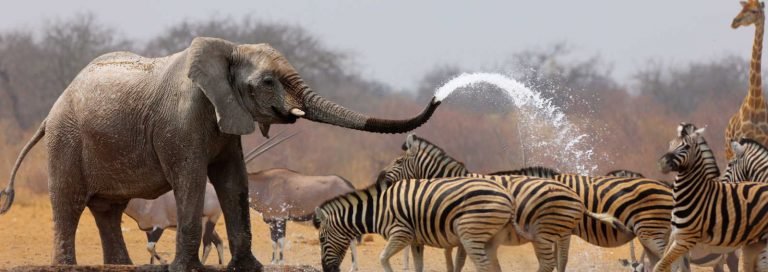
Etosha National Park
Namibia
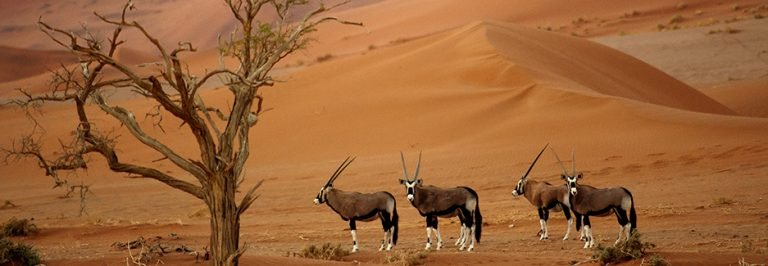
Namib Desert-Naukluft Park
Namibia
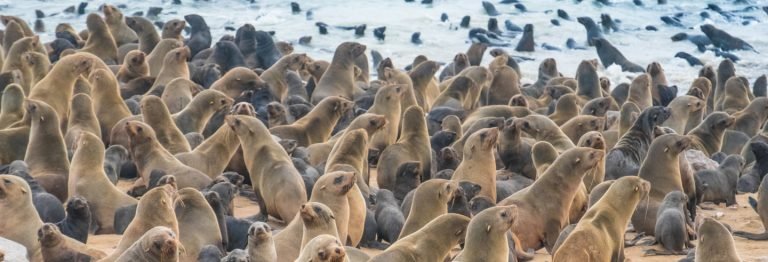
Cape Cross Seal Reserve
Namibia

The Kalahari Desert
Namibia

Dorob National Park
Namibia
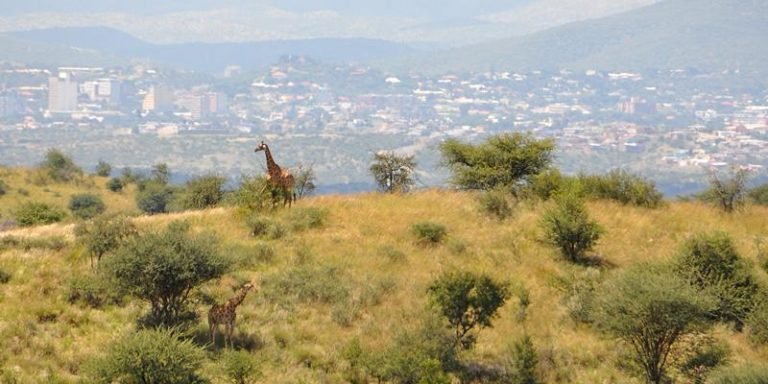
Daan Viljoen Game Park
Namibia

Gross-Barmen Hot Springs
Namibia

Skeleton Coast Park
Namibia

Tsau //Khaeb National Park
Namibia

/Ai-/Ais Hot Springs
Namibia

Mudumu National Park
Namibia
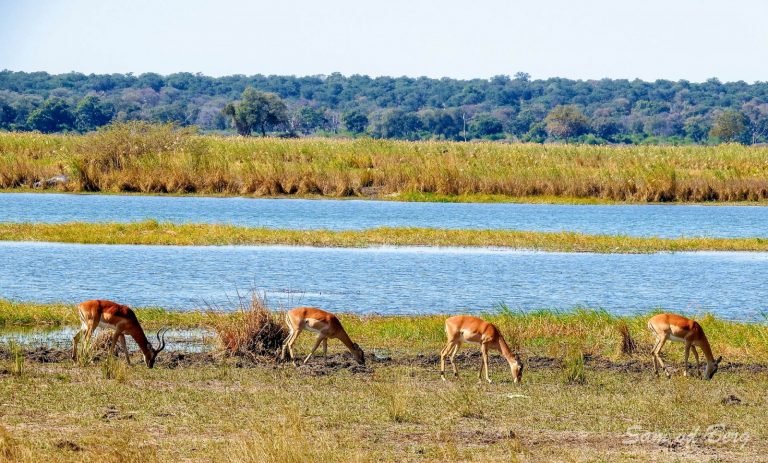
Bwabwata National Park
Namibia
